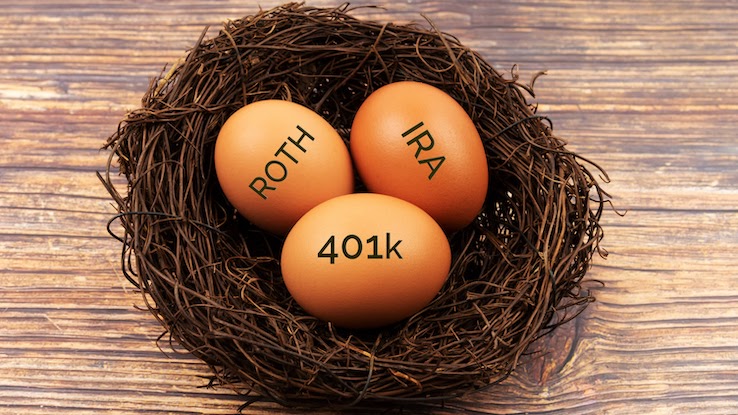
An IRA (individual retirement account) is a tax-advantaged account meant to help you save enough over the long term to be comfortable when you retire. They’re designed with savings and investments in mind, and most employers offer their employees options to open an IRA account.
There are two types of IRA accounts that share some similarities. However, there are some differences worth knowing. The first is the traditional IRA and the second is the Roth IRA. They can vary when it comes to tax deductions, eligibility standards, and how you can access your funds.
So, what is better, a Roth IRA or a traditional IRA?
What Is a Traditional IRA?

When you make contributions to your traditional IRA, it helps lower your yearly taxable income. The account becomes tax-deductible for your state and federal tax returns as long as you contribute in the same year. When you withdraw funds, it gets taxed at your normal income tax rate.
Since contributions you make can lower your taxable income, it also reduces your adjusted gross income. This provides additional benefits for other tax incentives, like the student loan interest deduction or the child tax credit.
It’s worth noting that if you withdraw any of your earnings from a traditional IRA, you will have to pay extra taxes and an early withdrawal penalty. The penalty for early withdrawal is 10% of your total contribution amount. This penalty occurs when you take money out of your IRA before you reach the age of 59 1/2.
What Is a Roth IRA?

With a Roth IRA, you cannot reduce your annual adjusted gross income since you don’t get a tax deduction when making contributions. However, any withdrawals that you make once you are retired are tax-free.
There are some income-eligibility restrictions that you should know. Married couples, for example, need to have a modified adjusted gross income that is less than $208,000 to make any contributions into a Roth IRA. Also, singles need to have a modified adjusted gross income that’s less than $140,000.
You are not required to take any money out of your Roth IRA since there are no required minimum distributions. This makes them a pretty good option for wealth-transfers. You also don’t have to pay income tax on the withdrawals you make.
Main Differences Between Traditional and Roth IRA’s

Even though both types of accounts offer excellent tax breaks, there are some differences between the two for when you can claim them. Anyone that has an earned income can contribute to a traditional IRA. Yet, whether or not your contributions are tax-deductible will depend on your overall income and if you have an employer-sponsored retirement plan.
One of the other main differences to know is the withdrawal rules. For example, with a traditional IRA, once you turn age 72, you must start taking distributions. These are taxable withdrawals that are a certain percentage of the funds in your account.
A Roth IRA, on the other hand, does not have any withdrawal requirements. This is since there are no required minimum distributions. Plus, if you decide to make a withdrawal, you don’t have to pay any income tax.
Tax Breaks
A traditional IRA:
- You’re eligible for the saver’s tax credit
- You receive a tax deduction for the year you contribute
- You pay income tax on withdrawals
A Roth IRA:
- You’re eligible for the saver’s tax credit
- There are no tax deductions for contributions made
- During retirement, you receive tax-free earnings and don’t pay tax on withdrawals
Income Limits
For a traditional IRA, if you have an earned income, then you are eligible to contribute. However, the amount of tax you have to pay is determined by your income limit and if your employer offers you an IRA plan.
You’re eligible as a single tax filer with a Roth IRA if your modified adjusted gross income is less than $140,000. As a married couple, you can file together if you have a modified adjusted gross income of less than $208,000.
Distribution Rules
There are some different distribution rules if you want to withdraw earnings from your IRA. For example, you can avoid the 10% early withdrawal penalty and not have to pay tax if you have your Roth IRA for a minimum of five years. You will also need to meet at least one of the following:
- You have a permanent disability
- Your beneficiary withdraws funds if you pass away
- You put the money towards a first-time home purchase
- You are at least 59 1/2 years old
If you want to withdraw your earnings, but you have had your account for fewer than five years, you can avoid paying the 10% withdrawal penalty if you meet the following criteria:
- The money gets used for a first-time home purchase, certain medical costs, or for qualified education expenses
- The money is withdrawn by your beneficiary or estate after you pass away
- The money gets used to help with financial hardship or a disability
- You withdraw the money when you are at least 59 1/2 years old
Pre-Retirement Withdrawl Rules
Withdrawing funds from a traditional IRA before you turn age 59 1/2 means you pay a 10% withdrawal penalty, as well as taxes on the amount withdrawn. That said, there are some special circumstances where you can avoid paying the penalty fee. For example, if you choose to use your withdrawal for qualified higher education expenses, you won’t pay the 10% penalty. You will, however, still have to pay taxes on the withdrawal amount.
Another special circumstance would be if you wanted to use the funds as a first-time home-buyer expense. It’s important to know that if you decide to use this particular circumstance, you can only use an amount of up to $10,000.
Choosing the Right IRA for You

When choosing between a traditional IRA or Roth IRA, the best thing to do is to think about your personal circumstances. For example, you might need to use earnings as a first-time home-buyer or pay off student loan interest. If that’s the case, a traditional IRA can offer great benefits.
Put some thought into how your future income might look and how your income tax bracket might affect it. You can make a more informed decision on which tax rate will benefit you most since you now know the difference between Roth and traditional IRA.





